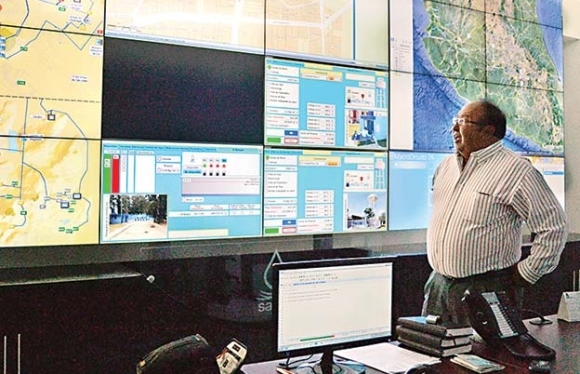León, in the state of Guanajuato, is a prosperous industrial city (population 1.6 million), which built its wealth by processing animal hides obtained from the surrounding ranching areas into all manner of leather goods, especially clothing, accessories and shoes, the range of which goes from casual to ultra-fashionable. León does not just have shoe stores, it has shoe shopping centers!
Founded in 1576 and named for a province in Spain, the city became an important colonial center, well positioned on the main trading routes. It later became important for anti-colonial sentiment. Brothers Juan and Ignacio Aldama, born here in the eighteenth century, became key figures in the Independence movement led by Father Miguel Hidalgo. Shortly after Independence, the city’s shoe industry started, introduced by skilled craftsmen from Puebla.
Like any wealthy Mexican city, León has lots of old buildings, including the eighteenth century Cathedral with its fine choir stalls and the Nuestra Señora de los Angeles church, embellished by the interesting carvings of a native craftsman. The impressive Town Hall, with its elaborate façade, is a nineteenth century addition, as is the Manuel Doblado Theatre, designed by José Noriega who also had a hand in building theatres in several other cities in the region, including Guanajuato, Aguascalientes and San Luis Potosí.
 The city would have even more old buildings today were it not for the disastrous flood of June 1888 when torrential downpours caused the Río Gómez to burst its banks. A wall of water and debris swept away more than 2000 homes, causing 200 fatalities and making 20,000 homeless. Major engineering works shortly afterwards have ensured that the city is now safe from future events of this kind.
The city would have even more old buildings today were it not for the disastrous flood of June 1888 when torrential downpours caused the Río Gómez to burst its banks. A wall of water and debris swept away more than 2000 homes, causing 200 fatalities and making 20,000 homeless. Major engineering works shortly afterwards have ensured that the city is now safe from future events of this kind.
The city has grown into one of Mexico’s most important industrial centers. The position of León has been key to its success. The city is located in central Mexico, close to the major urban areas of Mexico City, Querétaro and Guadalajara. On a broader scale, it is close to the major export markets of the USA, Canada and Central America. Market proximity is enhanced by an excellent communications network, including good road and rail links, easy access to several major airports, and to seaports such as Manzanillo.
Like most cities in central Mexico, one of León’s most pressing problems is how to ensure that its residents and industries have an adequate supply of potable water, even though the city was rated #1 in the country in terms of overall performance in this regard in the 2011 report “Water Management in Mexican Cities”.
In order to monitor the city’s water usage more effectively, engineers from the León Potable Water and Sewerage System (SAPAL) have introduced a sophisticated software system that provides real time data about the city’s water network and wells. It enables the engineers to overlay data like address, owner, account status, and water consumption onto a series of screen connected to Google Earth.
The system was developed in-house by local engineers, starting more than a decade ago, at a fraction of the cost of purchasing a similar system from an external provider. The León system is already being closely studied by water experts from other cities and countries.
SAPAL’s Control and Monitoring Center has a video wall, measuring 7.5 by 2 meters, with 24 LED screens. The center functions 24 hours a day, monitoring details of water distribution for more than 9000 data points, including wells, pipelines and holding tanks.
According to Agustín Báez, the city official responsible for SAPAL operations, the objective is “to have measurement from point of extraction to final use” since “what is not measured is not controlled.”
Sources:
- León usa Google para vigilar el uso del agua (Excelsior)
- León, Mexico Monitors Water System with Google Earth, Other Software Systems (OOSKAnews)
- West Mexico, A Traveller’s Treasury (Sombrero Books, 2013)
Related posts:
Sorry, the comment form is closed at this time.